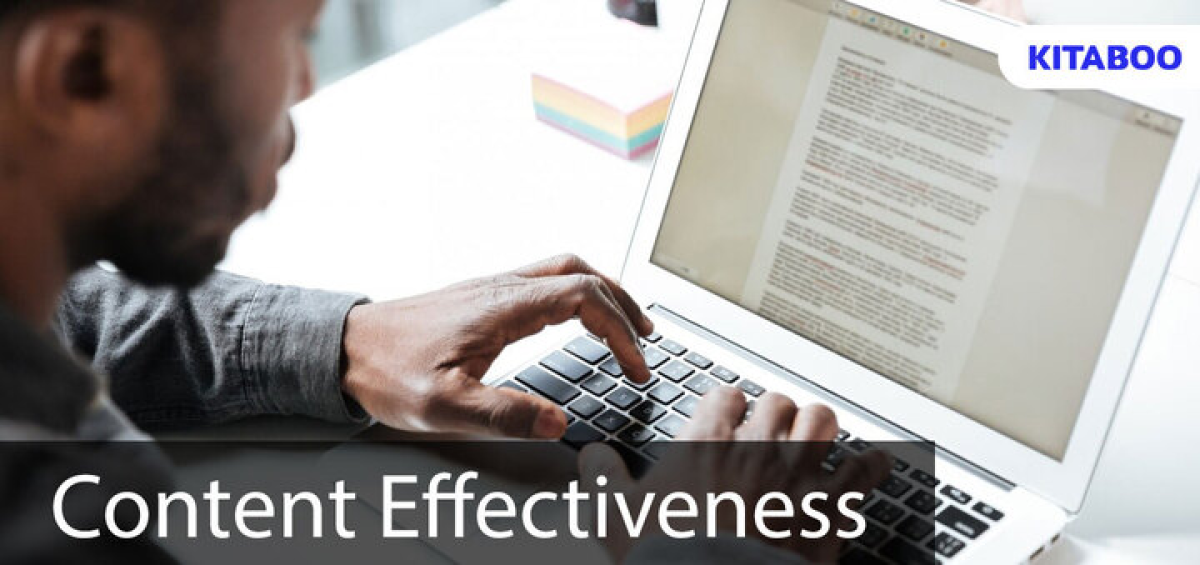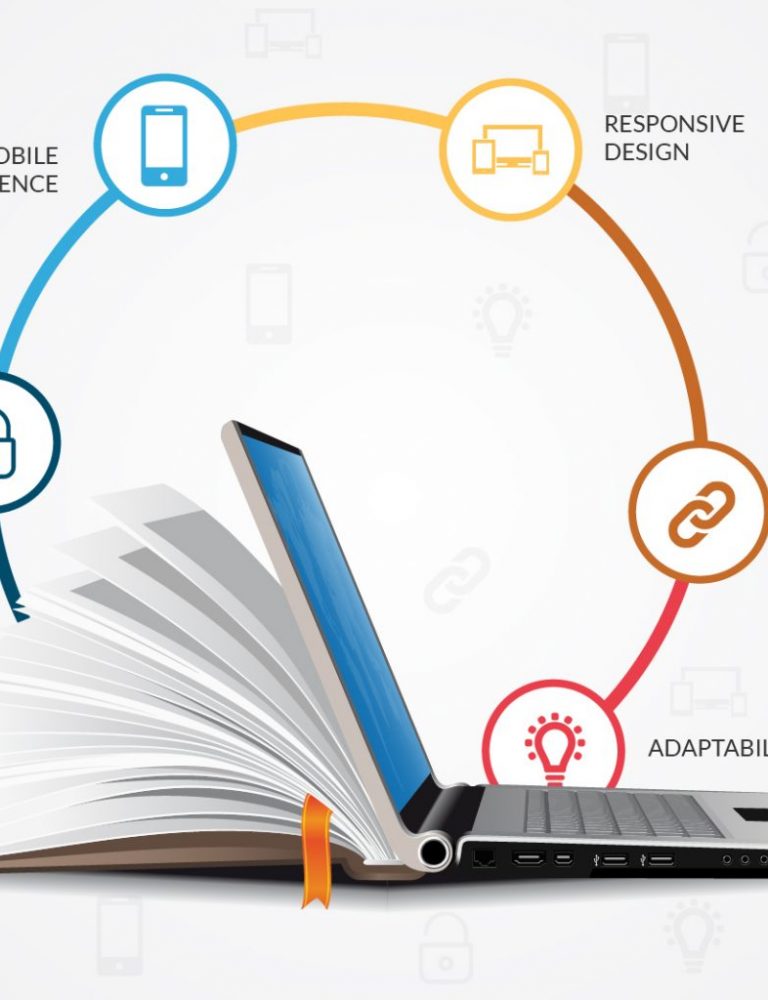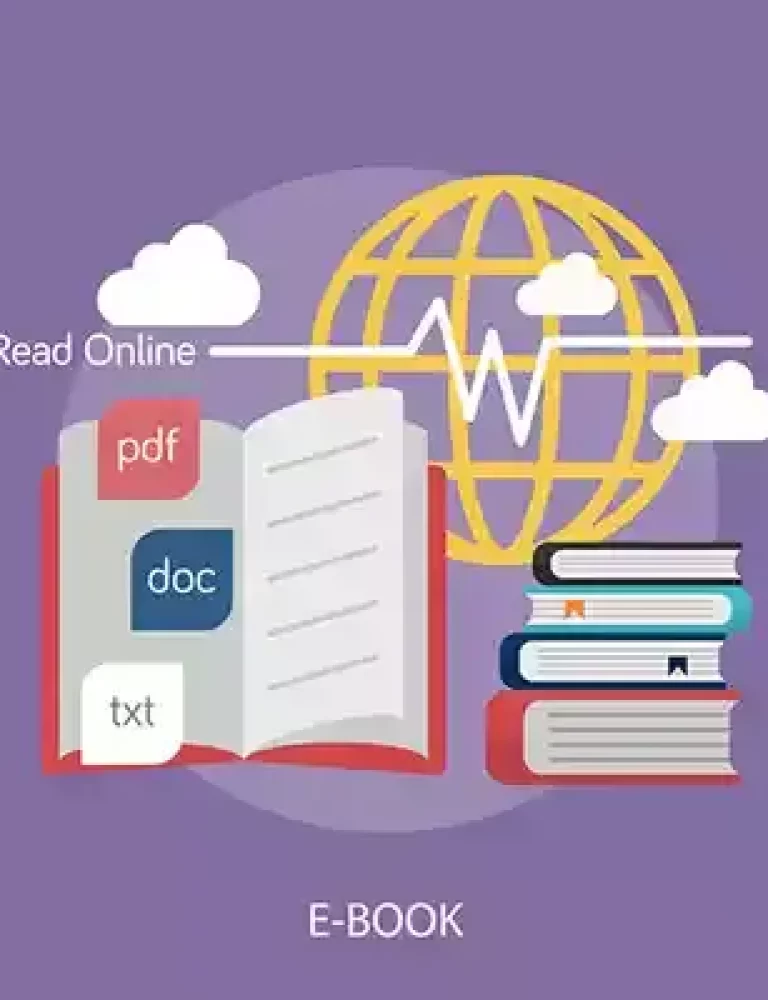With more and more tech firms jumping into the fray to impart knowledge, learners are spoilt for choice when it comes to educational content, online as well as offline. This is why digital textbook creation platforms like KITABOO produce digital books and content and distribute them.
However, with fierce competition, it is imperative to conduct a periodical review of content to assess content effectiveness.
Table of contents
I. What are Key Performance Indicators (KPIs)?
II. What are Assessment Tools? How are These Used to Measure Content Effectiveness?
III. Methods for Content Review and Enhancement of High-Quality Standards
- Performance Level of Learners
- Skill Assessment
- Content Engagement
- Conduct Satisfaction Surveys
- Enrollments
- Completion Rate
- The Kirkpatrick Model
IV. Conclusion
What are Key Performance Indicators (KPIs)?
To understand the workings of a certain program or course, and measure the progress of a student, key performance indicators (KPIs) are used by organizations in the educational services industry.
They are a prerequisite in assessing the content effectiveness of the programs and services used to educate students. The following are the most essential and common KPIs used in the education sector:
- Financial: They offer discernibility into spending patterns on the faculty and students. It also aids in devising plans that would give a higher return on investment. (ROI)
- Student Success: These are used to evaluate and interpret graduation rates, student engagement rates, student outcomes, etc.
- Admissions and Enrollments: To deliver excellent academic results, it is crucial to know the acceptance rates, transfer rates, and retention rates of students.
- Faculty and Staff: This mainly focuses on student-to-faculty ratio, faculty productivity, faculty turnover, faculty and staff tenure rate, etc. This KPI will give you an idea of whether you made the correct decision.
Facilities and Resources: This KPI will show you a clear picture of where, when, and how your resources are being utilized, which can help you choose better alternatives.
What are Assessment Tools? How are These Used to Measure Content Effectiveness?
Assessment tools are the techniques used to judge the students’ understanding, their growth, and desired learning outcomes. When employed appropriately, these tools help with content review and enhancement of high-quality standards.
Utilizing these tools, strategies to understand and enhance content effectiveness can be developed. Here are some frequently used assessment tools:
- Diagnostic assessment: Used in the form of a pre-test, this tool enables the teacher to understand students’ knowledge before moving on to more complex topics. Short quizzes, mind maps, group discussions, etc., are some of the formats of diagnostic assessment.
- Formative assessment: This tool aids the faculty in understanding student learning while they are still in the process of teaching. Formative assessments are carried out in the form of different activities, including class discussions, group projects, short and regular quizzes, etc.
- Summative assessment: Administered at the end of an instructional unit, this tool helps quantify student learning. These are in the form of standardized tests where the student performance is measured to a benchmark. Final projects, end-of-unit tests, and standardized tests are some of the examples of summative assessments.
- Ipsative assessment: Focusing on personal progress, ipsative assessment helps students improve their scores, motivating them to set higher goals. It evaluates the student’s performance to their previous performance.
- Norm-referenced assessment: This assessment tool compares a learner to a group of peers. It ranks the highest and the lowest performing pupils. IQ tests, various entrance tests, and physical assessments can be included in this type of assessment.
Criterion-referenced assessment: In this type of assessment, the learner’s scores are compared to a predetermined criterion. The student has to answer a predetermined number of questions precisely to clear the test.
Methods for Content Review and Enhancement of High-Quality Standards
In the ruthlessly competitive world of educational content, it becomes mandatory to regularly review your content and comprehend the impact it is making on the target learners.
Below are some important methods to convincingly apprehend your content effectiveness:
Performance Level of Learners
The first and foremost important method to measure KPI is to assess the performance level of learners.
Set learning objectives to begin with and then compare the student performance metrics to those objectives to assess how effective the content is. Involve the relevant faculty and peers in evaluating the students to get a more clear picture.
Skill Assessment
Utilizing the above-mentioned assessment tools, get a knowledge check of the learners periodically or at the end of the course. Different types of assessments can be embedded in the content itself to enhance the content value.
Allow learners to practice real-time tasks and assess their skills. Learning gaps and content effectiveness are identified through skill assessment.
Content Engagement
An additional way of assessing content effectiveness is keeping track of how students engage with your content. Having relevant and interesting content will draw more people to your site.
This, in turn, builds more awareness about your educational content, resulting in more traffic and inquiries. More time spent on the page by learners indicates they are watching the complete content and are drawn towards it.
Conduct Satisfaction Surveys
Gathering feedback directly from the learners is one of the surest ways to understand the impact of your course. Surveys can be conducted in various ways like forms, questionnaires, interactive conversations, and so on.
Satisfied students indicate high standards of content. Moreover, this positive feedback attracts other participants to your course as reviews and feedback are a testimony to your course being exceptional.
Enrollments
To have an idea about what is influencing your lead generation can be a complex but crucial part of measuring content effectiveness.
Since content should be designed to direct potential candidates through each stage of the enrollment journey, this particular method cannot be neglected in the process of content review and enhancement for high-quality standards.
For example, suppose you see a pie chart showing the number of leads generated by a school through each of its main channels, where website content is driving maximum prospective students towards enrollment. In that case, you can scale down the marketing efforts and pursue marketing on other channels that aren’t doing so well.
Completion Rate
The completion rate measures the percentage of users who have completed a specific course. It is an indicator of whether the students who started the program made it to the end, covering all the material. The formula to calculate this is:
Completion rate = Number of students completing the course / Number of initial candidates.
Though it is an essential method to evaluate content effectiveness, it does not take into consideration the students’ performance.
The Kirkpatrick Model
Developed in the 1950s by Donald Kilpatrick, a professor at the University of Wisconsin, the Kirkpatrick model lays out a simple, four-level approach to measuring the content effectiveness of training and educational content.
The four levels of the model are reaction, learning, behavior, and results.
Conclusion
As we see above, there’s no one way to measure and evaluate content effectiveness. From stats to simple student feedback, these multiple measures provide an accurate picture of content effectiveness for the teachers than a single method. This is the need of the hour for content review and enhancement for high-quality standards.
To create, publish, and distribute interactive and multimedia-rich digital e-books that are mobile-friendly, education providers can leverage their solutions on digital textbook platforms such as KITABOO and reach a huge audience worldwide.
To know more, write to us at KITABOO@hurix.com
Discover How An Ebook Conversion, Publishing & Distribution Platform Can Help You
Kitaboo is a cloud-based content platform to create-publish & securely distribute interactive mobile-ready ebooks.
You May Also Like








